Topics for Thesis
Note
If you are interested in doing a thesis that focus a geoinformatics topic, talk to us!
We offer topics from our own research work as well as topics from externals (companies, administration, etc.; national and international). Of course you may also propose a topic yourself. Please, feel free to contact Prof. Bernard or members of our staff.
Bachelor and Master Thesis can be written in German or English
Topics for Bachelor Thesis:
The Open Science movement and shifting requirements by research funders and publishers lead to increasing publication of research data. While special repositories for geospatial data exist, geospatial data is also often published in general purpose research data repositories operated by diverse organisations and institutions, such as OpARA, Dataverse, DataverseNL, or instances of DSpace.
This thesis will extend and existing tool (geoextent, written in Python) with capabilities to analyse geospatial datasets multiple institutional or independent research data repositories. This analysis comprises data retrieval, data analysis (Is the data geospatial? What are the properties?), and comparative data visualisation (Which repository contains data for which part of the Earth?).
Depending on the students interests, the emphasis may be put on the data retrieval and metadata extraction (e.g., including and evaluation of download and system performance, handling huge datasets, supporting more geospatial data formats), or on the visualisation (e.g., interactivity, visual exploration).
Dieses Thema kann auf Deutsch oder Englisch bearbeitet werden.
Contact:
 © Daniel Nüst
© Daniel Nüst
Visiting Address:
Hülssebau, Raum O 163 Helmholtzstraße 10
01069 Dresden
Deutschland
Ansprechpartner:
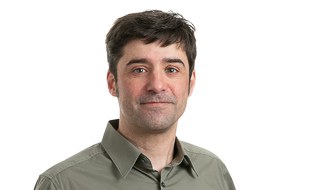 © GI
© GI
Visiting Address:
Hülssebau, HÜl O155 Helmholtzstraße 10
01069 Dresden
Deutschland
Das Thema kann hinsichtlich verschiedener Schwerpunkte betrachtet werden, z.B. Analysieren von Usability-Problemen in einer konkreten Anwendung, einer Gruppe von Anwendungen (z.B. Geo-Dashboards) oder Entwurf von Mustern zur Erstellung nutzerfreundicher Geo-Anwendungen bzw. Durchführung von Usability-Studien.
Ansprechpartner:
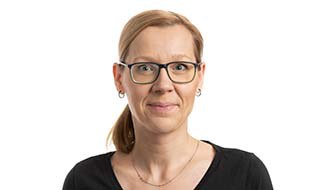 © GI
© GI
Dr.-Ing. Christin Henzen
Send encrypted email via the SecureMail portal (for TUD external users only).
Visiting Address:
Hülssebau, HÜL O154 Helmholtzstraße 10
01069 Dresden
Deutschland
Ansprechpartner:
 © GI
© GI
Dr.-Ing. Christin Henzen
Send encrypted email via the SecureMail portal (for TUD external users only).
Visiting Address:
Hülssebau, HÜL O154 Helmholtzstraße 10
01069 Dresden
Deutschland
 © GI
© GI
Visiting Address:
Hülssebau, HÜl O155 Helmholtzstraße 10
01069 Dresden
Deutschland
Topics for Bachelor or Master Thesis:
The increasing availability of interactive maps and their usage in different application domains call for new methods to facilitate their assessment. A recent work has proposed the use of configuration files in JSON to automate the creation of experiments assessing web maps (Gadomski and Degbelo 2025). While the approach has shown promise, its main drawback is the need for users to be able to write specifications in JSON. To address that gap, this thesis will explore the use of natural language specifications for the creation of user experiments evaluating web maps. Tasks include:
- Needs assessment: collect needs of users regarding generating natural language descriptions for map experiment specification via a lab-based or crowdsourcing need elicitation study. The purpose of this task is to shed light on and extract recurrent patterns from the users’ descriptions.
- Prototype development: build a web-based prototype, which translates natural language specifications into JSON specifications compatible with previous work (Gadomski and Degbelo 2025). Large language models will be used at this point for the conversion from unstructured input into (semi-) structured outputs.
- Theoretical evaluation of the natural-language to JSON translation (e.g. using criteria such as syntactic validity and the semantic similarity between translation and ground truth).
References:
Gadomski, M. and Degbelo, A. (2025) ‘MEC: towards semi-automated map experiment creation’, in. GeoHCC’25: 1st ACM SIGSPATIAL International Workshop on Human-Centered Geospatial Computing, Minneapolis, Minnesota, USA.
Contact
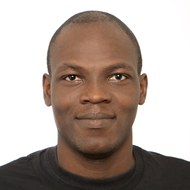 © A. Degbelo
© A. Degbelo
Mr Dr. rer. nat Auriol Degbelo
Send encrypted email via the SecureMail portal (for TUD external users only).
Visiting Address:
Hülssebau Helmholtzstraße 10
01069 Dresden
Deutschland
Spatial similarity is at the core of geographic information retrieval and existing work has proposed different criteria to compute the spatial similarity of polygons. Recently, neural similarity learning has shown promise (see e.g. Yang et al 2024; Li et al 2025). Hence, the goal of this work is to explore the use of neural approaches for learning similarity metrics for geographic information retrieval. Tasks include:
- Dataset preparation: generate a ground truth of spatial similarity scores (e.g. area of overlap, hausdorff distance, earth mover’s distance).
- Architecture design: compare the performance of existing neural architectures and location encoding strategies (Mai et al 2022) for the task of similarity learning. Architectures will include for instance sequence-based architectures (e.g. transformer, perceiverIO) and graph-based architectures (e.g. GCN, GAT, GIN).
References:
Liu, X., Xu, Z., Wei, H. and Yang, P. (2025) ‘Graph-enhanced spatiotemporal trajectory similarity learning’, Intelligent Computing, 4, p. 0169. Available at:
https://doi.org/10.34133/icomputing.0169.
Mai, G., Janowicz, K., Hu, Y., Gao, S., Yan, B., Zhu, R., Cai, L. and Lao, N. (2022) ‘A review of location encoding for GeoAI: methods and applications’, International Journal of Geographical Information Science, 36(4), pp. 639–673. Available at:
https://doi.org/10.1080/13658816.2021.2004602.
Yang, P., Wang, H., Yang, J., Qian, Z., Zhang, Y. and Lin, X. (2024) ‘Deep learning approaches for similarity computation: A survey’, IEEE Transactions on Knowledge and Data Engineering, 36(12), pp. 7893–7912. Available at:
https://doi.org/10.1109/TKDE.2024.3422484.
Contact
 © A. Degbelo
© A. Degbelo
Mr Dr. rer. nat Auriol Degbelo
Send encrypted email via the SecureMail portal (for TUD external users only).
Visiting Address:
Hülssebau Helmholtzstraße 10
01069 Dresden
Deutschland
Micro-mobility services have conquered our streets in the form of bike sharing and scooter rental systems. As these services generate large volumes of data about user trips, they are an interesting data source to help researchers advance their understanding of urban mobility.
However, even when the data is stripped of explicit user identifiers, it still poses privacy risks. For example, individuals could be re-identified by origin-destination pairs or timing. As these risks are abstract, they are often poorly understood by both users and service providers.
Therefore, this topic explores privacy risks in micro-mobility data by identifying methods adversaries may use to expand their knowledge. The topic aims to make privacy threats in micro-mobility data more visible and comprehensible by demonstrating them using example datasets.
Your tasks may include
- familiarizing yourself with literature on (mobility) data privacy risks
- selecting one or more privacy threats and defining corresponding adversarial scenarios ("attacks") on micro-mobility data
- simulating these attacks on synthetic and/or real-world trip data
- visualizing the outcome using figures, maps, or interactive tools
The specific focus of your work (risk modeling, implementation, visualization) can be adjusted depending on your interests, background and skills.
Contact person
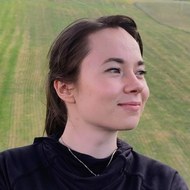 © Anna Brauer
© Anna Brauer
Ms Dipl.-Inf. Anna Brauer
Send encrypted email via the SecureMail portal (for TUD external users only).
Visiting Address:
Hülssebau, Raum O 163 Helmholtzstraße 10
01069 Dresden
Deutschland
Mobility data of individuals is highly unique, as people spend most of their time in a small set of places that can identify them uniquely - like a spatio-temporal fingerprint. While visited places and timestamps are known to be highly identifying, less attention has been paid to other features embedded in the data. However, features describing an individual's driving, riding or walking style may enable the re-identification of individuals based on GPS traces recorded far away from their known activity areas - and thus pose a privacy threat that is not well understood.
In this topic, your objective is to investigate to which degree non-location-based features of mobility data carry identifying information and could pose a privacy risk.
Your tasks may include
- conducting a literature review to identify relevant mobility features
- extracting these features from a set of real-world GPS trajectories
- quantifying the privacy risk associated with each feature, for example, by training and testing machine learning classifiers and analyzing feature importance
Contact person
 © Anna Brauer
© Anna Brauer
Ms Dipl.-Inf. Anna Brauer
Send encrypted email via the SecureMail portal (for TUD external users only).
Visiting Address:
Hülssebau, Raum O 163 Helmholtzstraße 10
01069 Dresden
Deutschland
Mobility trajectories are digital traces of people's movements, recorded with positioning technologies such as GPS. These data are immensely important for research, urban planning, and consumer applications in the health and fitness sector. However, sharing trajectory data can expose sensitive personal information. To address this issue, various privacy-preserving methods have been developed to protect individuals while still enabling useful analyses. These methods suppress, obscure, or aggregate sensitive aspects of the data.
Your objective is to design and implement a tool that applies privacy-preserving techniques to trajectory data. Depending on your preferences, this tool can take the form of:
- a software library,
- a plugin for GIS software (e.g., QGIS),
- or a mobile application.
Your tasks include
- selecting one or more suitable methods from the literature
- understanding the underlying algorithms and finding an efficient implementation
- (optional) creating a user-friendly interface
- testing your implementation with real-world trajectory data
Your contact person
 © Anna Brauer
© Anna Brauer
Ms Dipl.-Inf. Anna Brauer
Send encrypted email via the SecureMail portal (for TUD external users only).
Visiting Address:
Hülssebau, Raum O 163 Helmholtzstraße 10
01069 Dresden
Deutschland
Geospatial metadata have a huge potential to connect research across scientific disciplines. However, they are rarely collected for the main output of science: research papers/articles. In this thesis, and existing free and open source scientific publishing platform (e.g., Janeway, PubPub, Ambra, Jupyter Book) will be extended so that it collects and displays spatio-temporal metadata for research articles to answer questions such as: Which area of the Earth is covered in the article?
Which time period does the article describe? Which research articles from the same journal analyse areas close to each other? The implementation will be evaluated with an expert user group from the respective publishing platform.
This topic can be worked in German or English.
Contact:
 © Daniel Nüst
© Daniel Nüst
Visiting Address:
Hülssebau, Raum O 163 Helmholtzstraße 10
01069 Dresden
Deutschland
Imagine being able to easily find research articles based on the locations and time periods they mention. This project aims to use a type of artificial intelligence called Large Language Models (LLMs) to extract geographical information from scientific texts, such as journal articles and preprints. LLMs such as ChatGPT are powerful tools that can process and generate text, and are becoming increasingly capable of understanding geographical data.
The goal of this project is to use LLMs to answer questions like: Which places or regions does an article mention? What time periods are covered in an article? By extracting this information, we can add it to the traditional metadata of research articles (such as authors, title, summary, and keywords) and make them easier to find. The extracted information will be available in common GIS formats, making it usable in geographical information systems.
In this study students can compare different LLMs, including those specifically designed for geographical data (geo-LLMs), and experiment with various techniques, such as:
- Using different prompts and warm-up methods to improve the models' performance
- Inputting different types of data, such as publication titles, abstracts, full texts, or PDFs
- Targeting different types of geographical data, such as single points, bounding boxes, or more complex geometries like lines and polygons, including administrative areas
- Extracting temporal metadata with varying levels of granularity, such as single intervals or multiple time intervals
We will start by using publicly available and freely licensed scientific publications or publication databases. You can utilize special AI tools for scientific publications, such as PaperMage, or geo-LLMs. Depending on your level of expertise and the scope of the project (e.g., BSc or MSc), you can focus on specific aspects of the research.
This research area has the potential to support multiple thesis projects, allowing you to explore different aspects of LLMs and geographical information extraction. This project offers a unique opportunity to explore the intersection of artificial intelligence, geography, and scientific research, and to contribute to the development of new tools and methods for extracting valuable information from scientific texts.
The thesis is supervised by Daniel Nüst () and Simeon Wetzel () betreut.
Zahlreiche interaktive Karten zur Visualisierung von CO2-Emissionen werden weltweit erstellt [1,2]. Dennoch ist es nicht möglich neue Daten in diesen kartenbasierten Anwendungen hochzuladen um mögliche Ursachen für die Emissionswerten zu untersuchen. Das Ziel dieser Arbeit besteht in der Erstellung von einer kartenbasierten Anwendung, die es ermöglicht Hypothesen für lokale CO2-Emissions-werten zu formulieren. Die Aufgaben umfassen:
- Entwicklung einer Webbasierte-Karte zur Visualisierung von CO2-Emissionen
- Erstellung von Diagrammen zur Visualisierung von Korrelationen zwischen unabhängigen Variablen (z.B. Besiedlungsdichte, Wirtschaftskraft, Landnutzung, …) und CO2-Emissionen
- Evaluation der Nützlichkeit und/oder Nutzbarkeit der Anwendung (z.B. theorie-basiert oder experten-basiert oder nutzer-basiert [3])
Diese Abschlussarbeit wird gemeinsam von der TU Dresden und der Staatlichen Studienakademie Dresden (Prof. Dr. Daniel Gembris) gemeinsam betreut.
Referenzen:
[1] https://edgar.jrc.ec.europa.eu/dataset_ghg2024_nuts2
[2] https://ourworldindata.org/co2-and-greenhouse-gas-emissions
[3] https://www.mdpi.com/2220-9964/4/1/262
Ansprechpartner
 © A. Degbelo
© A. Degbelo
Mr Dr. rer. nat Auriol Degbelo
Send encrypted email via the SecureMail portal (for TUD external users only).
Visiting Address:
Hülssebau Helmholtzstraße 10
01069 Dresden
Deutschland
Large language models have recently shown good performance on tasks such as generation, summarization, translation, classification and question answering (see e.g. [1]). There are recent attempts to evaluate their ability to represent geometries and spatial relations [2], geographic diversity [3], and their ability to recognize location descriptions in tweets [4]. Nonetheless, an understanding of the extent to which they help answer geographic questions is still in the early stages. The aim of this thesis is to help advance that understanding through a systematic evaluation of existing models concerning their ability to help users answer geographic questions. Steps include:
- Model Selection: This step will involve a selection of a set of state-of-the-art models, e.g., FLAN-T5, LLAMA, or models from OpenAI (e.g., gpt3.5-turbo).
- Evaluation Criteria Selection: The list of criteria to evaluate the model (e.g., consistency, performance, relevance, specificity) will be defined at this point.
- Question Selection: There are several types of geographic questions (see e.g. [2]), and this step will clarify those to be answered by the participants. If necessary, this step will involve the design of optimized prompts for interacting with the models.
Prototype implementation: to facilitate reproducibility, the different approaches to compare will be implemented as langchain-tools. The prototype will be built as a streamlit-application.
User testing: users will be invited to go through the script in a lab-based study. A follow-up crowdsourcing-based study as a follow-up to this thesis is planned.
References
[1] Degbelo, A. (2024) ‘Prolegomena to a description language for GenAI tools in cities’, Digital Government: Research and Practice, 1(1). Available at: https://doi.org/10.1145/3652952.
[2] Ji, Y., & Gao, S. (2023). Evaluating the effectiveness of large language models in representing textual descriptions of geometry and spatial relations. arXiv preprint arXiv:2307.03678.
[3] Liu, Z., Janowicz, K., Currier, K., & Shi, M. (2024). Measuring Geographic Diversity of Foundation Models with a Natural Language--based Geo-guessing Experiment on GPT-4. arXiv preprint arXiv:2404.07612.
[4] Hu, Y., Mai, G., Cundy, C., Choi, K., Lao, N., Liu, W., ... & Joseph, K. (2023). Geo-knowledge-guided GPT models improve the extraction of location descriptions from disaster-related social media messages. International Journal of Geographical Information Science, 37(11), 2289-2318. Available at: https://doi.org/10.1080/13658816.2023.2266495
Contact
 © A. Degbelo
© A. Degbelo
Mr Dr. rer. nat Auriol Degbelo
Send encrypted email via the SecureMail portal (for TUD external users only).
Visiting Address:
Hülssebau Helmholtzstraße 10
01069 Dresden
Deutschland
An ever-increasing number of scientific articles are being published, presenting researchers with the challenge of finding relevant articles. One aspect that has hardly been utilised to date to improve the findability of research results is geographical and temporal information, although research in almost all disciplines has a clear reference to time and space. For example, the route along which marine biologists collect data on a research cruise, the place where archaeologists carry out an excavation, or the region in which social scientists conduct a study.
In this work, an appealing interactive application is to be developed that allows interested laypersons and scientists to record the spatial and temporal aspects of scientific articles in the form of well-defined metadata without familiarisation and with a playful touch. Players are shown the title, summary and illustrations of a randomly selected article and can then draw their assessment of the appropriate geometries (points, lines, regions) on an interactive map and enter the time period in a simple form. The online game should be entertaining and playable on mobile devices and utilise typical gamification aspects (leaderboard, quests, etc.). The game and the data collected will be evaluated in a small study.
When carried out as a master's thesis, more advanced automatic methods should be used to create highlights for possible place names or time information in the displayed texts and representations. It would even be possible to pre-select those representations that contain a map. Alternatively, an automated evaluation of repeatedly performed georeferencing is conceivable in order to achieve a consensus or data validation between several players and thus increase the data quality. This analysis should be statistically evaluated.
This idea is an extension of "Appstract", see akeshavan/appstract and appstract.pub/#.
This work can be written in German or English.
The STAC specification is a common language to describe geospatial information, so it can more easily be worked with, indexed, and discovered. Geospatial research data, however, is often published in research data repositories (e.g., Zenodo, OSF, Figshare) so that it is citable and preserved, so that their spatial properties cannot be used to facilitate discovery.
In this work, the implementation of a STAC wrapper for one ore more general purpose research data repositories and/or geospatial research data repositories (e.g., Pangaea, GFZ Data Services) will be conceptualised, implemented (based on existing STAC implementations), demonstrated (using existing STAC clients) and evaluated with an expert user group.
This topic can be worked in German or English.
Contact:
 © Daniel Nüst
© Daniel Nüst
Visiting Address:
Hülssebau, Raum O 163 Helmholtzstraße 10
01069 Dresden
Deutschland
Reproducibility and replicability of research are cornerstones of science. However, too rarely are even foundational research articles evaluated and confirmed in this way. In this thesis, student and supervisor will jointly identify a set of research articles that have a high impact on an area of geoscientific research and then these works are reproduced (using existing data and methods/software) or replicated (confirming results using different data and methods/software).
Contact:
 © Daniel Nüst
© Daniel Nüst
Visiting Address:
Hülssebau, Raum O 163 Helmholtzstraße 10
01069 Dresden
Deutschland
The automatic detection of semantic types of datasets is crucial for the development of intelligent geovisualizations (see Degbelo and Kray 2018). Stevens’ levels of measurement are key to existing heuristics for geovisualization creation based on given datasets. Recent work (Hulsebos et al, 2019, Scheider and Huisjes, 2019) has shown that machine learning techniques can be applied to data type prediction problems. This thesis will assess the efficiency of different machine learning for the prediction of the semantic type of datasets Stevens’ data. Tasks include
- Data preparation (i.e., collection and manual labelling of datasets from the UCI machine learning repository)
- Systematic evaluation of different models (e.g., using the Caret package in R or comparison scripts in Python) to determine the extent to which a given attribute is on a nominal/ordinal/interval/ratio scale. The performance of the models should also be compared against a baseline of simple hand-crafted rules
References
Degbelo, A. and Kray, C. (2018) ‘Intelligent geovisualizations for open government data (vision paper)’, in Banaei-Kashani, F., Hoel, E. G., Güting, R. H., Tamassia, R., and Xiong, L. (eds) 26th ACM SIGSPATIAL International Conference on Advances in Geographic Information Systems. Seattle, Washington, USA: ACM Press, pp. 77–80. doi: 10.1145/3274895.3274940.
Hulsebos, M., Hu, K., Bakker, M., Zgraggen, E., Satyanarayan, A., Kraska, T., Demiralp, Ç. and Hidalgo, C. (2019) ‘Sherlock: A deep learning approach to semantic data type detection’, in Teredesai, A., Kumar, V., Li, Y., Rosales, R., Terzi, E., and Karypis, G. (eds) Proceedings of the 25th ACM SIGKDD International Conference on Knowledge Discovery & Data Mining - KDD ’19. Anchorage, Alaska, USA: ACM Press, pp. 1500–1508. doi: 10.1145/3292500.3330993.
Scheider, S. and Huisjes, M. D. (2019) ‘Distinguishing extensive and intensive properties for meaningful geocomputation and mapping’, International Journal of Geographical Information Science, 33(1), pp. 28–54. doi: 10.1080/13658816.2018.1514120.
Contact
 © A. Degbelo
© A. Degbelo
Mr Dr. rer. nat Auriol Degbelo
Send encrypted email via the SecureMail portal (for TUD external users only).
Visiting Address:
Hülssebau Helmholtzstraße 10
01069 Dresden
Deutschland
Ansprechpartner:
 © GI
© GI
Dr.-Ing. Christin Henzen
Send encrypted email via the SecureMail portal (for TUD external users only).
Visiting Address:
Hülssebau, HÜL O154 Helmholtzstraße 10
01069 Dresden
Deutschland
In Zusammenarbeit mit Pikobytes
Within the framework of the research project „Weiterentwicklung des Daseinsvorsorgeatlas für das Land Niedersachsen” (DVAN), we award several Bachelor's or Master's thesis (in the subject area of Desktop-GIS-analysis, location and market research & location analysis). The theses will make a methodological and analytical contribution to the further development in the research project.
In case of DVAN, locations of basic services (e.g. schools, nursing and care facilities, health care facilities or facilities for the supply of goods for daily needs) are visualised in a web-based information system. A central task of regional planning is to support rural areas with the challenges of demographic change. The task of the research project is to implement functionalities to support location decisions. During the research project, functionalities are developed that are intended to support multicriteria decision analysis and help to evaluate and forecast the spatial small-scale supply situation.
Within the framework of your Bachelor's or Master's thesis, you can derive new knowledge through a methodical and content-related examination of catchment area analyses for the sectors "education" or "health" or "retail". The analytical focus with GIS (Desktop GIS; ArcGIS; QGIS) can be accompanied e.g. with contents of real estate economics (location & market research) or spatial planning.
Contact:
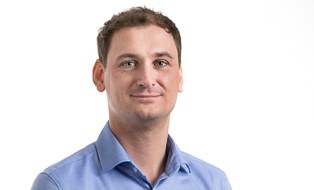 © GI
© GI
Mr Falko Krügel M.Sc.
Send encrypted email via the SecureMail portal (for TUD external users only).
Visiting Address:
Hülssebau, O152 Helmholtzstraße 10
01069 Dresden
Deutschland
GI Web applications are often designed for heterogeneous user group with varying characteristics, requirements and expectations. In addition, GI Web applications provide functionalities that range from basic data discovery functionalities to complex map based functionalities. Consequently, the usability of such applications is a major concern in GI Science. By now methods and techniques have been adopted from the software design research to incorporate usability aspects in the development of GI Web applications. Recent research on usability studies in GI Science emphasizes on the methods and techniques to evaluate the usability of these applications and development of generic solutions for GI specific usability problems. However, there is a lack of standards or guidelines for the evaluation of GI specific usability. Therefore, this research aims to use literature and empirical research methods to develop tailored heuristics and guidelines for the evaluation of GI web applications with emphasis on GI user tasks.
Ansprechpartner / Contact:
Ms Susanna Ambondo Ankama M.Sc.
Send encrypted email via the SecureMail portal (for TUD external users only).
Visiting Address:
Hülssebau, O165 Helmholtzstraße 10
01069 Dresden
Deutschland
The Expectation Confirmation Theory – ECT posits that expectations coupled with perceived performance, lead to satisfaction. User expectations are regarded as comparison standards against the performance of the application. They are predictive, reflecting anticipated attributes and behaviour of an application at a point in time. Adopting the ECT theory, allows us to study the relationships between user expectations and the usability aspects for GI web applications. This requires extending the ECT model to capture GI web application characteristics, formulate and evaluate relationships among different elements pertaining to user expectations that have an influence on usability of GI web applications. The main objective is to determine the relationship between of user expectation confirmation and usability of GI web applications.
Ansprechpartner/Contact:
Ms Susanna Ambondo Ankama M.Sc.
Send encrypted email via the SecureMail portal (for TUD external users only).
Visiting Address:
Hülssebau, O165 Helmholtzstraße 10
01069 Dresden
Deutschland
Ansprechpartner:
 © GI
© GI
Dr.-Ing. Christin Henzen
Send encrypted email via the SecureMail portal (for TUD external users only).
Visiting Address:
Hülssebau, HÜL O154 Helmholtzstraße 10
01069 Dresden
Deutschland
In Zusammenarbeit mit der Juniorprofessur für Didaktik der Geographie und Umweltkommunikation
Ansprechpartner:
 © GI
© GI
Visiting Address:
Hülssebau, HÜl O155 Helmholtzstraße 10
01069 Dresden
Deutschland
Topics for Master Thesis:
Despite the desideratum that “queries in different languages, but with identical semantics, should yield equivalent ranking lists when retrieving on the same multilingual [collection]“ (Yang et al, 2024), queries expressed in different languages within geoportals often produce divergent result sets. The aim of this work is to address that gap. Tasks include:
- Formalization of language bias: this step will go beyond ranking considered in (Yang et al, 2024) to produce a metric that accounts for the various sources of language bias in geodata search, for instance: differences in the elements returned, variations in the spatial/temporal coverage of the results, discrepancies in result rankings.
- Assessment of language bias: the proposed metric will be applied to evaluate the extent of language bias in current geoportals. Examples of relevant portals in the European context can be selected from (Degbelo et al, 2016). Additional examples outside Europe may be considered (e.g. Data.gov)
- Mitigation of language bias: the work will propose and evaluate techniques to mitigate language bias (e.g. query expansion, query translation, dense retrieval). Experiments will be conduced using datasets from the NFDI4Earth OneStop4All (https://onestop4all.nfdi4earth.de/) as a test scenario. Both open-source multitingual models (mBERT, XLM-R, Teuken-7B, Deepseek …) and proprietary (e.g. GPT, Gemini) ones may be considered for dense retrieval strategies.
References:
Degbelo, A., Trilles, S., Kray, C., Bhattacharya, D., Schiestel, N., Wissing, J. and Granell, C. (2016) ‘Designing semantic application programming interfaces for open government data’, JeDEM - eJournal of eDemocracy and Open Government, 8(2), pp. 21–58. Available at: https://doi.org/10.29379/jedem.v8i2.420.
Yang, J., Jiang, F. and Baldwin, T. (2024) ‘Language bias in multilingual information retrieval: The nature of the beast and mitigation methods’, in J. Sälevä and A. Owodunni (eds) Proceedings of the Fourth Workshop on Multilingual Representation Learning (MRL 2024). Miami, Florida, USA: Association for Computational Linguistics, pp. 280–292. Available at: https://doi.org/10.18653/v1/2024.mrl-1.23.
Contact
 © A. Degbelo
© A. Degbelo
Mr Dr. rer. nat Auriol Degbelo
Send encrypted email via the SecureMail portal (for TUD external users only).
Visiting Address:
Hülssebau Helmholtzstraße 10
01069 Dresden
Deutschland
The Semantic Web vision (Berners-Lee et al 2001) has outlined a future where digital assistants perform tasks on the Web on behalf of users. There has been significant progress on the original semantic web vision, and agent-based frameworks have emerged for automating tasks such as geographic information retrieval (e.g. Ning et al., 2025; Feng et al., 2025) or geographic data analysis (e.g. Akinboyewa et al., 2025; Feng et al., 2025). Nonetheless, the important task of geographic data exchange between agents has, so far, received less attention. The goal of this thesis is to learn about the effective design of such agents. Tasks include:
- Scenario definition: the scenario envisioned is that of a computational agent looking for missing datasets on behalf of an analyst, as briefly outlined in (Degbelo 2022). Open datasets from Germany will be selected to simulate that scenario. GeoJSON or JSON/LD may be chosen as a format to begin with.
- Prototype development: this step will build a multi-agent framework for geographic data exchange using the Langgraph framework. At least two workflows will be considered during the design of the framework: one involving an agent communication language (e.g. KQML) and one using large language models solely. An explainer will be added as a module to the architecture to facilitate the interpretation of the results.
- Evaluation: the impact of the design decisions will be evaluated through several criteria such as task complexity (e.g. one-dimensional vs multidimensional exchange), effectiveness (e.g. number of successful exchanges), efficiency (e.g. number of tokens, number of conversational turns until success), and qualitative value.
References:
Akinboyewa, T., Li, Z., Ning, H. and Lessani, M.N. (2025) ‘GIS Copilot: towards an autonomous GIS agent for spatial analysis’, International Journal of Digital Earth, 18(1), p. 2497489. Available at: https://doi.org/10.1080/17538947.2025.2497489.
Berners-Lee, T., Hendler, J. and Lassila, O. (2001) ‘The semantic web’, Scientific American, 284(5), pp. 34–43. http://www.krchowdhary.com/ai/ai16/sematic%20web-sci-am.pdf
Degbelo, A. (2022) ‘FAIR geovisualizations: definitions, challenges, and the road ahead’, International Journal of Geographical Information Science, 36(6), pp. 1059–1099. Available at: https://doi.org/10.1080/13658816.2021.1983579.
Feng, Y., Zhang, P., Xiao, G., Ding, L. and Meng, L. (2025) ‘Towards a barrier-free GeoQA portal: Natural language interaction with geospatial data using multi-agent LLMs and semantic search’, International Journal of Applied Earth Observation and Geoinformation, 144, p. 104825. Available at: https://doi.org/10.1016/j.jag.2025.104825.
Ning, H., Li, Z., Akinboyewa, T. and Lessani, M.N. (2025) ‘An autonomous GIS agent framework for geospatial data retrieval’, International Journal of Digital Earth, 18(1), p. 2458688. Available at: https://doi.org/10.1080/17538947.2025.2458688.
Contact
 © A. Degbelo
© A. Degbelo
Mr Dr. rer. nat Auriol Degbelo
Send encrypted email via the SecureMail portal (for TUD external users only).
Visiting Address:
Hülssebau Helmholtzstraße 10
01069 Dresden
Deutschland
With online geovisualizations becoming increasingly available, techniques are needed to facilitate their findability (see e.g. [1]). The aim of this thesis is to propose a model to rank online geovisualizations. The model will be tested through user ratings from a lab-based or online study. Tasks include:
- Relevance criteria elicitation: compile a list of criteria that matter during relevance assessment of online geovisualizations, based on a focus group discussion.
- Prototype development: implement a user interface to display most relevant online geovisualizations for a given query. The data from [2] will be used as input.
- Relevance model development: collection of user ratings (e.g. DCG) about the visualizations returned by the prototype and development of a model to estimate the relevance of online geovisualizations for given tasks. The model development approach can be inspired from [3]. Its sensitivity to the device type (e.g. Desktop vs Mobile) may be also evaluated.
Readings:
[1] Degbelo, A. (2022) ‘FAIR geovisualizations: definitions, challenges, and the road ahead’, International Journal of Geographical Information Science, pp. 1–41. doi: 10.1080/13658816.2021.1983579.
[2] Hüffer, P., Degbelo, A. and Risse, B. (2025) ‘Geovicla: automated classification of interactive web-based geovisualizations’, in. The 13th International Conference on Geographic Information Science (GIScience 2025), Christchurch, New Zealand.
[3] Hu, Y., Janowicz, K., Prasad, S. and Gao, S. (2015) ‘Enabling semantic search and knowledge discovery for ArcGIS online: A linked-data-driven approach’, in Bacao, F., Santos, M. Y., and Painho, M. (eds) AGILE 2015 - Geographic Information Science as an Enabler of Smarter Cities and Communities. Lisbon, Portugal: Springer, Cham, pp. 107–124. doi: 10.1007/978-3-319-16787-9_7.
Contact
 © A. Degbelo
© A. Degbelo
Mr Dr. rer. nat Auriol Degbelo
Send encrypted email via the SecureMail portal (for TUD external users only).
Visiting Address:
Hülssebau Helmholtzstraße 10
01069 Dresden
Deutschland
Metaphors reflect how people think about user interfaces, and people naturally produce spatial metaphors when talking about user interfaces. Though previous work has acknowledged their values in HCI, there is still a lack of techniques to formally describe metaphors and tools to facilitate their analysis. This thesis will use existing taxonomies of image schemas to annotate people’s actions during map interaction and build a tool that help make sense of the metaphors they use. The tool will use text mining techniques and visualization techniques to help answer questions related to metaphors of map interaction.
Contact:
 © A. Degbelo
© A. Degbelo
Mr Dr. rer. nat Auriol Degbelo
Send encrypted email via the SecureMail portal (for TUD external users only).
Visiting Address:
Hülssebau Helmholtzstraße 10
01069 Dresden
Deutschland
Mobility data is sensitive and personal data, which is one the reasons why its availability to researchers is limited. One solution to this problem is to replace real-world data with generated synthetic (artificial) mobility data. In recent years, researchers have proposed different methods for generating synthetic mobility data that shares as many characteristics with real-world data as possible [1]. However, few efforts have been made to compare these methods and evaluate their usability in practical scenarios.
In this topic, your task is to pick a potential use case for synthetic mobility data and evaluate whether synthetic data can meaningfully replace real-world data in this specific case.
More specifically, you will:
- familiarize yourself with relevant literature
- choose a use case for applied mobility analysis; for example, assessing bikeability (i.e, the suitability of an area for bicycling [2])
- select and apply one or more synthetic data generators using a real-world dataset as input
- evaluate and compare the generators' output in terms of usability for your selected use case
[1] https://dl.acm.org/doi/full/10.1145/3610224
[2] https://www.sciencedirect.com/science/article/pii/S0198971520302866
Ansprechpartner:
 © Anna Brauer
© Anna Brauer
Ms Dipl.-Inf. Anna Brauer
Send encrypted email via the SecureMail portal (for TUD external users only).
Visiting Address:
Hülssebau, Raum O 163 Helmholtzstraße 10
01069 Dresden
Deutschland
Mit dem Global-Brook90 R-Package(https://github.com/hydrovorobey/Global_BROOK90) kann weltweit für ein festgelegtes Einzugsgebiet der lokale Wasserhaushalt inclusive einer Vorhersage berechnet werden. Dabei werden automatisch verschiedene Datenprovider abfragt und verschiedene globale Datensätze zur Landbedeckung, Boden, DGM etc. für die Modellierung verwendet. Ziel der Masterarbeit ist die Implementierung einer Webapplikation welche diese Funktionalität nutzerfreundlich anbietet.
Vorobevskii, I., Kronenberg, R., Bernhofer, C.: Global BROOK90 R Package: An Automatic Framework to Simulate the Water Balance at Any Location, Water, 12, https://doi.org/10.3390/w12072037, 2020
Ansprechpartner:
 © GI
© GI
Visiting Address:
Hülssebau, HÜl O155 Helmholtzstraße 10
01069 Dresden
Deutschland
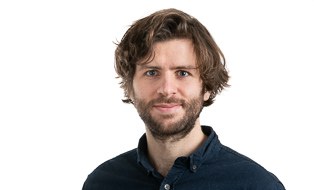 © GI
© GI
Mr Simeon Wetzel M.Eng.
Send encrypted email via the SecureMail portal (for TUD external users only).
Visiting Address:
Hülssebau, O152 Helmholtzstraße 10
01069 Dresden
Deutschland
In Kooperation mit Dr. Rico Kronenberg vom Institut für Hydrologie und Meteorologie, TU Dresden
Sowohl das Bundesinstitut für Bau-, Stadt-, und Raumforschung mit der laufenden Raumbeobachtung und der INKAR-DB sowie das Johann Heinrich von Thünen-Institut Bundesforschungsinstitut für Ländliche Räume, Wald und Fischerei haben Indizes und Methoden, um Stadt-Landabgrenzungen vorzunehmen.
Eine Vielzahl der Abgrenzungen basiert auf Erreichbarkeiten, Pendlerverhalten und Schwellwertdefinitionen. Im Rahmen einer künftigen Masterarbeit könnte ein Teil der Arbeitsleistung aus einer Übersicht der verschiedenen Kennwerte zur Raumabgrenzung im Fokus stehen, die Stärken und Schwächen die wichtigsten Abgrenzungsmethoden vorstellt.
Auf dieser Grundlage könnte sich ein zweiter Teil zur Arbeitsleistung anschließen, der einen stärkeren GI-analytischen Fokus verfolgt und der Frage nachgeht, inwiefern sich Gravitationsmodelle und im speziellen two-step floating catchment area (2SFCA) Methoden zur Abgrenzung von Stadt und Land eigenen könnten. Hierbei kann durch analytisch-exploratives Vorgehen in einem begrenzten Analysegebiet mithilfe Instituts-intern prototypisch vorhandenen, Werkzeugen (ArcGIS-Toolboxes, Pythonscripte etc.) Grundsätze zur Ableitung von Grenzdefinitionen mitgewirkt werden. Die Arbeit steht in einem Planungs- bzw. raumordnungstheoretischen, geographischen und GI- bzw. raumanalytischen Kontext.
Ansprechpartner:
 © GI
© GI
Mr Falko Krügel M.Sc.
Send encrypted email via the SecureMail portal (for TUD external users only).
Visiting Address:
Hülssebau, O152 Helmholtzstraße 10
01069 Dresden
Deutschland
The modelling of map content as structured data has been recognized in previous work (e.g. Scheider et al, 2014a,b; Degbelo, 2021, 2022) as a key enabler of semantic search of maps. Nonetheless, human-driven production of this metadata is impractical and there is still a lack of techniques to produce these metadata automatically. This thesis will explore means of addressing that gap. Tasks include:
- Prototypical implementation of exemplar web-based maps (both thematic map and topological maps)
- Requirements specification and implementation of the approach for map content metadata generation in RDF (Resource Description Framework)
- Evaluation of the approach (e.g., code overhead for developers, question answering)
References
Degbelo, A. (2021) ‘An ontology design pattern for geovisualization content description’, in E. Blomqvist, T. Hahmann, K. Hammar, P. Hitzler, R. Hoekstra, R. Mutharaju, M. Povedaf, C. Shimizuc, M. Skjaeveland, M. Solanki, V. Svátek, and L. Zhou (eds) Advances in Pattern-based Ontology Engineering. IOS Press, pp. 279–291. Available at: https://doi.org/10.3233/SSW210019.
Degbelo, A. (2022) ‘FAIR geovisualizations: definitions, challenges, and the road ahead’, International Journal of Geographical Information Science, 36(6), pp. 1059–1099. Available at: https://doi.org/10.1080/13658816.2021.1983579.
Scheider, S., Degbelo, A., Kuhn, W. and Przibytzin, H. (2014a) ‘Content and context description - How linked spatio-temporal data enables novel information services for libraries’, gis.Science, (04), pp. 138–149.
Scheider, S., Jones, J., Sánchez, A. and Keßler, C. (2014b) ‘Encoding and querying historic map content’, in J. Huerta, S. Schade, and C. Granell (eds) The 17th AGILE International Conference on Geographic Information Science - Connecting a Digital Europe Through Location and Place. Castellón, Spain: Springer International Publishing, pp. 251–273. Available at: https://doi.org/10.1007/978-3-319-03611-3_15.
Contact
 © A. Degbelo
© A. Degbelo
Mr Dr. rer. nat Auriol Degbelo
Send encrypted email via the SecureMail portal (for TUD external users only).
Visiting Address:
Hülssebau Helmholtzstraße 10
01069 Dresden
Deutschland
With online geovisualization becoming increasingly available, techniques are needed to facilitate their findability. The aim of this thesis is advance the state of the start of online geovisualization search. The focus of the thesis will be set based on the background and interest of the student. Possible directions include:
D1, knowledge harvesting: development of a prototype to crawl online geovisualizations, and build knowledge graphs for online geovisualization
D2, ranking: development and testing of a model to effectively rank online geovisualizations
Contact:
 © A. Degbelo
© A. Degbelo
Mr Dr. rer. nat Auriol Degbelo
Send encrypted email via the SecureMail portal (for TUD external users only).
Visiting Address:
Hülssebau Helmholtzstraße 10
01069 Dresden
Deutschland
- Requirement analysis for the modelling and application of Linked Data for authoritative geodata
- Selection of applicable authoritative datasets provided by the GeoSN
- Potential fort the integration with external, thematic data sources
- Prototypical implementation
Contact:
 © GI
© GI
Visiting Address:
Hülssebau, HÜl O155 Helmholtzstraße 10
01069 Dresden
Deutschland
